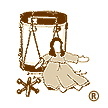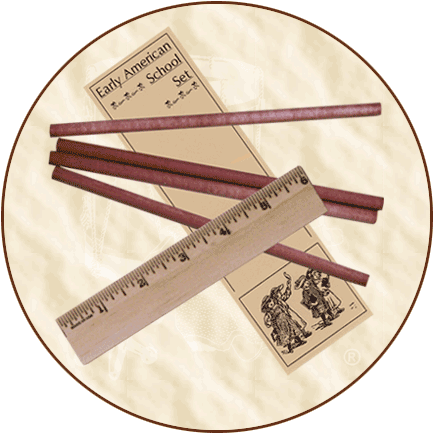.
Continued from product description
on Early Education's Page
Two...
Historical
Background: The basic learning tools of the one-room school
seem extremely primitive when compared to today's standards.
School supplies during in the late 1800s and early 1900s would
have included such items as a pencil box, round cedar pencils
without erasers, paper, and ruler. Most of the early pencils
were made with square lead and had to be sharpened by a knife
because the lead was not yet centered in the wood casing and
pencil sharpeners had not been invented yet.
In ancient times, the human body was used as the basis for
measurement, such as the length of the foot, or a stride, the
span of the hand, or the breadth of a thumb. The Egyptians, Greeks,
and Romans went through different phases of measuring but most
of the world adopted the metric system. Great Britain and the
United States made moves towards adopting the metric system in
the 1860s and even though it was made legal in 1866, the use
of the metric system was never made compulsory in the United
States. Many British scientists were opposed to the metric system.
Here is a poem by William Rankine who was one of the opposers:
Some talk of millimeters, and some of kilograms,
And some of deciliters, to measure beer and drams;
But I'm a British Workman, too old to go to school,
So by pounds I'll eat, and by quarts I'll drink,
And I'll work by my three foot rule.
A party of astronomers went measuring the Earth,
And forty million meters they took to be its girth;
Five hundred million inches, though, go through from Pole to
Pole;
So lets stick to inches, feet and yards,
And the good old three foot rule.
Fun
Fact: The Pendulum in the Tower of London -- with its
swinging pendulum beating at the rate of one second -- was once
used to prose a new measurement system based on the yard.
Fun
Fact: In June 1799, France began using the metric system
and declared the intent "For all people, for all time."













